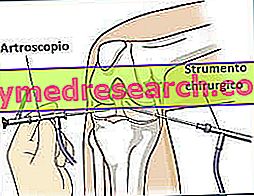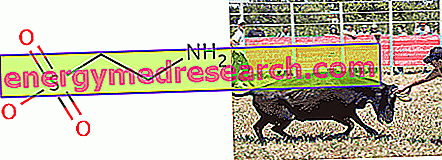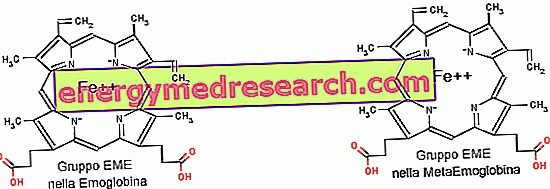Generality
Arthroscopy is a surgical procedure, with which the most important joints in the human body are diagnosed and treated. It is characterized by minimal invasiveness combined with great safety and effectiveness.

Its execution involves the use of different instruments, including the arthroscope. This is the most important surgical "iron", because it allows illuminating the articular cavity and filming what happens inside.
Preparation for arthroscopy requires the patient simple precautions, which however must be followed to the letter, if the operation is to be successful.
The healing time depends on the seriousness of the joint damage and the attention that the patient has towards himself, during the recovery phase.
What is arthroscopy?
Arthroscopy is a minimally invasive surgical procedure, which is performed to diagnose and treat disorders affecting the joints of the human body.
The intervention involves the use of a particular instrument, called an arthroscope, inserted in the so-called articular cavity through a small (maximum one centimeter) skin incision. Sometimes, this incision is accompanied by others: in fact, in certain situations, more than one are required to be able to insert the instruments necessary for the intervention.
The joints most subjected to arthroscopy are the most important of the body, also in terms of size, ie: knees, hips, shoulders, elbows and wrists.
Thanks to its minimal invasiveness, arthroscopy is considered an example of "closed surgery", to be contrasted with the classic (more invasive and risky) "open-air" surgery.
HOW IS THE ARTHROSCOPE MADE?

The arthroscope is the main and most representative instrument of arthroscopy . Comparable in length and width to a drinking straw, it has, at the end to be inserted into the joint cavity, a network of optical fibers, which act as both a light source and a television camera .
What is illuminated and taken up by the arthroscope is projected onto a monitor (to which it is obviously connected), allowing the surgeon to orientate himself within the joint and perform the operation correctly.
JOINTS
An articulation is a complex anatomical structure that, by putting two or more nearby bones in contact, allows them to move without direct contact and avoiding the resulting wear.
joint mobility; these elements are:
- Tendons . Made of very resistant fibrous fabric, they connect the muscles to the bones and help stabilize the joint.
- Ligaments . Very similar in tendon composition, they connect adjacent bone structures.
- Cartilaginous structures . Consisting of resistant connective tissue, they cover the surface of the bones involved in the joint. They are used to absorb shocks, reduce friction and prevent possible bone damage.
- Synovial fluid . It is a dense and sticky fluid, which, being in the articular cavity and in contact with the other structures, acts as an internal lubricant and a nourishing element for the carttilagine. The liquid is enclosed within the so-called synovial membrane.
Without the joints, it would not be possible to bend the legs, extend the arms, raise the objects, make a run, etc.
When you run
At one time, when certain instruments were not yet available, arthroscopy was a diagnostic procedure only, aimed at planning open surgery. Subsequently, with the advent of new devices and with the progress of medical technology, arthroscopy has also taken on a therapeutic purpose. Today, thanks to the enormous experience acquired by orthopedic surgeons in this field, it has become one of the most common operations for the treatment of joint damage.
ARTHROSCOPY AS DIAGNOSIS
Currently, diagnostic arthroscopy is performed when the classic radiological examinations, such as magnetic resonance imaging (MRI), CT or X-ray, do not clearly show the disorders of a painful, rigid, swollen and / or popping joint.
In other words, it represents a solution to uncertain cases, for which it is difficult to establish a definitive diagnosis.
Once the exact joint problem is outlined, arthroscopy can become therapeutic even during the same session.
ARTHROSCOPY AS A THERAPY
During a therapeutic arthroscopy operation the following operations can be performed:
- Repair damage to cartilage, tendons or ligaments
- Remove inflamed tissue. This is the case, for example, of the synovial membrane, which can become inflamed and give rise to a synovitis .
- Remove a small portion of bone or cartilage, which, by breaking, has stiffened the joint.
- Drain part of the synovial fluid when it is in excess.
WHAT PATHOLOGICAL CONDITIONS CAN BE TAKEN?
The pathological conditions that generally require arthroscopy are:
- Osteoarthritis or osteoarthritis . It is a chronic degenerative joint disease that causes inflammation, pain and joint stiffness.
- Baker's cyst . Its appearance is due to an accumulation of synovial fluid at a certain point in the joint. Causes swelling and joint stiffness.
- The so-called frozen shoulder . Suffering patients complain of pain, limited movement and joint stiffness.
- Temporomandibular disorders . These are the disorders that affect the joint located between the lower part of the mandible (lower jaw) and the temporal bone of the skull.
- Arthrofibrosis . It is the generally post-traumatic formation of scar tissue within the joint. This tissue limits normal joint movement.
- Synovitis . They are the inflammations of the synovial membrane, inside which the synovial fluid is contained.
- Ligament, tendon and meniscus rupture . The rupture of one of these structures is usually due to a sports trauma, but can also occur during particularly heavy work or during a domestic accident.
- Bony prominences . They are neoformations of bone tissue, developed in a completely anomalous way and without a precise reason.
Preparation
A few days before the arthroscopy, the patient must go to the clinic, where the operation will take place, to undergo a series of cognitive clinical examinations and to be informed on how to intervene and on all the pre-operative measures to be taken.
PRE-OPERATOR CLINICAL EXAMINATIONS
By subjecting the patient to a thorough physical examination, to a complete blood test and to an evaluation of the medical history (past illnesses, allergies to drugs and anesthetics, medicines taken etc.), it is established whether or not there are the required health conditions for a successful outcome of the intervention.
INFORMATION ON THE PROCEDURE OF THE OPERATION
Once the pre-operative clinical examinations have been completed, the patient is informed about what the intervention entails, what is the duration of the entire procedure, what is the expected anesthesia, what are the rehabilitation exercises to be performed at home and, finally, how long the healing phase usually lasts.
If there are still concerns or concerns, the medical staff is at the complete disposal of the patient, for any other information.
PRE-OPERATIVE MEASURES
For the whole operation to proceed smoothly, pre-operative measures must be followed to the letter. Also illustrated at the end of the clinical examinations, they consist of:
- Present yourself at full fast since at least the previous evening, as anesthesia is provided.
- To be accompanied at home by a family member or friend, because, after the operation, you are certainly not self-sufficient. Driving, in fact, is not allowed and it is very likely that one may feel confused because of anesthesia.
- Stop taking certain medications if these should be contraindicated in any way.
Procedure
Arthroscopy is an outpatient surgery, which generally takes place in half a day and, with some exceptions, does not require any hospitalization.
The operation is performed by inserting an arthroscope into the joint, viewing the state of the joint cavity on a monitor and intervening where necessary.

Figure: a real-time image of a meniscectomy operation.
The entire operation requires the patient to be anesthetized and sedated. Anesthesia can be general, local or spinal, depending on the characteristics of the patient (age, allergies to anesthetics, etc.) and according to the wishes of the operating surgeon.
ANESTHESIA
Local anesthesia . By local anesthesia, it is understood that the sense of "falling asleep" is limited to the joint to be operated. The anesthesiologist, who is a specialized doctor, gives the patient, in addition to anesthetics, painkillers and sedatives. Anesthetics and painkillers are injected near the painful area, while sedatives are introduced intravenously. The effects are sufficiently powerful and lasting, so that the subject operated does not perceive any discomfort.
Once the operation is over and the anesthesia has disappeared, the patient needs a few hours to recover.
Spinal anesthesia . Spinal anesthesia is practiced when the surgeon has to intervene on the lower limbs. Anesthetics are injected near the spinal cord (then on the back), while painkillers are infused intravenously.
Once the operation is finished and the effects of anesthesia have disappeared, it takes a few hours to fully recover.
General anesthesia . General anesthesia is practiced if there is some contraindication to other types of anesthesia or by the express wish of the surgeon.
Anesthetic drugs, which are injected intravenously before and throughout the procedure, make the patient completely unconscious.
At the end of the operation, the pharmacological infusion is interrupted, so that the patient awakens. The total recovery of the senses and motor skills could take up to a whole day, therefore the patient could be invited to spend a night in the hospital.
ARTHROSCOPY
After anesthesia, the arthroscopy begins.
First, the surgeon covers the entire area to be treated with disinfectant, so as to minimize the risk of infection.
Then, make a first incision, about a centimeter, and insert the arthroscope.
With this tool you can see the joint and scan the entire joint cavity.
Once oriented and identified the site of the problem, practice other incisions, always about one centimeter, and insert the tools for repairing joint damage.
When he considers the arthroscopic operation to be completed, he extracts the surgical "irons", including the arthroscope, and closes the incisions with the usually resorbable stitches.
If the operated anatomical zone allows it, a compression bandage is also applied, which limits the natural post-operative swelling.
DURATION OF THE INTERVENTION

Figure: knee arthroscopy.
The duration of an arthroscopy depends on what the operation involves.
The simplest interventions can also be completed in 15-30 minutes; the most complex, on the other hand, can take anywhere from 45 to 120 minutes.
Post-operative phase
Just after the operation, the patient is taken to a comfortable hospitalization room of the clinic (or hospital) and kept under observation until the main effects of anesthesia disappear. Only at this point, in fact, does the surgeon give the green light to discharge.
If one has resorted to general anesthesia, it is advisable to allow the person operated on to spend the entire night in the hospital, for completely precautionary reasons.
HOW DOES IT FEEL?
The after-effects of anesthesia . Fatigue, confusion, dizziness and a sense of dizziness are the main effects of anesthesia. They are attenuated within a few hours, but for a complete resolution they must wait 24 hours. It is precisely for this reason that it is very important to be accompanied and assisted by a family member or friend.
The after-effects of the intervention . In the early days, it is very likely that the operated area is sore and swollen. Pain and swelling must not alarm (unless they go beyond the doctor's instructions), as they are two completely normal consequences, due to incisions and the introduction, in the joint, of surgical instruments.
What care must be taken when washing?
One of the most frequent questions asked by patients is what to do when washing. In general, the advice given by doctors is this: for the first 10 days, the wound should not be wet, because it could be contaminated by one or more bacteria colonies. Therefore, it is good to cover the area worked with waterproof material and make sure that the water does not filter in any way. It may be useful to "wash yourself in pieces".
REMEDIES FOR PAIN AND THE GONFIORE
To mitigate the painful sensation and swelling, it is useful:
- Take painkillers . The most used are paracetamol and, if there are no contraindications (allergies or risk of bleeding), aspirin.
- Make ice packs . The ice acts against pain and against swelling. It is a natural remedy, very effective and, if used correctly, free of side effects. At least for the first week, it should generally be applied 4-5 times a day, for no more than 20 minutes.
- Rest . Not fatigue accelerates the disappearance of pain and swelling.
- If a lower limb has been operated, keep the affected leg raised . This is an excellent remedy to limit swelling.
REHABILITATION EXERCISES TO BE PERFORMED AT HOME
In some cases, the doctor may advise the patient to perform very simple rehabilitation exercises at home, before the actual physiotherapy. This is stretching to limit muscle stiffness, typical of the post-operative phase.
Recovery times
Recovery times are fundamentally dependent on four factors:
- The type of intervention . For example, the reconstruction of the anterior cruciate ligament of the knee has a much longer prognosis than a meniscectomy, or the removal of a small piece of injured meniscus.
- The characteristics of the patient (age, health status, etc.).
- The work activity performed by the patient . Who carries out a sedentary job stressed less the articulation performed compared to those who are involved in heavy work; consequently it heals first.
- The attention that the patient has towards himself . This means, in other words, do not neglect the advice of the doctor, do not burn the stages, rely on a physiotherapist, request a medical consultation if unusual pains appear etc.
PERIODICAL CHECKS
Post-operative checks are necessary for the attending physician to monitor the progress of the situation and to make sure that everything goes well.
Their number depends on the severity of the intervention. For example, the arthroscopic intervention of meniscectomy, which is a relatively simple operation and with a rather short prognosis, involves a first check a week after surgery and a second check one month after surgery.
PHYSIOTHERAPY
Physiotherapy is essential to regain normal joint mobility. Therefore, after a few days after surgery, it is advisable to consult a trusted physiotherapist and begin to follow his instructions to the letter. If you do not have this attention, there is the great risk of healing "evil", taking with you postural problems and other disorders of a different nature.
RETURN TO ACTIVITIES? EVERYDAY AND ACTIVITY? SPORTY
The return to daily activities, such as driving a motor vehicle, and sports activities depends on the type of intervention and the severity of joint damage, which was remedied by arthroscopy.
The only advice that can be given here is to undergo post-operative checks and consult, from time to time, with your own doctor.
Making decisions autonomously could be risky and compromise the successful outcome of arthroscopic surgery.
Risks and complications
Thanks to advances in medicine, arthroscopy is a safe procedure.
The risk of complications, in fact, is very low, so much so that according to an English statistic it concerns one case per 100. Moreover, in most cases, these are only temporary disorders, which resolve with a prognosis longer than expected.
The possible complications are the following:
- Internal hemorrhage in the joint . Loss of blood within the operated joint causes pain and joint swelling. If the patient addresses the doctor in a timely manner, it is a problem that can be solved without particular repercussions.
- Infection inside the joint . This disorder, also called septic arthritis, is due to bacterial contamination and causes joint pain and swelling. As in the case of hemorrhage, if the patient immediately contacts his doctor, it is possible to remedy the situation.
- Deep vein thrombosis . It is the formation of a blood clot in a vein that crosses the operated limb. The typical symptoms are swelling and pain. This is a very rare phenomenon, but it must be quickly remedied because it is potentially dangerous.
- Nervous damage . The surgeon can unintentionally damage the nerves passing near the joint, causing a certain loss of sensitivity. Today, thanks to the experience acquired by doctors and medical technology, it happens very rarely.
Results
Unlike open surgery, arthroscopy has the following advantages:
- Absent or contained pain (depending on the type of anesthesia) during the operation
- Quick healing times
- Risk of low infections
- Both intervention and discharge on the same day (unless general anesthesia is used)
- Quick return to everyday activities.
Interventions in arthroscopy combine effectiveness with minimal invasiveness, therefore they are considered a valid therapeutic practice.



